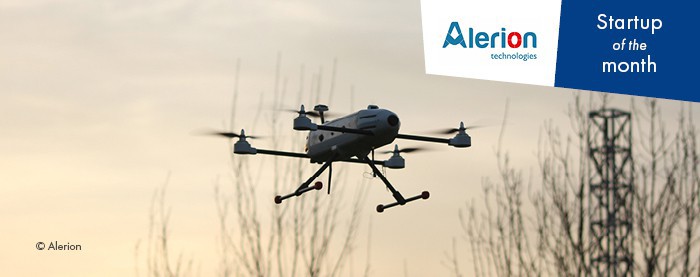ESA BIC Bavaria alumnus Alerion Technologies S. L. is developing autonomous unmanned aircraft for Earth observation applications that are effective and affordable. The team at Alerion Technologies possesses advanced know-how and technological capabilities to develop and integrate high-end and robust solutions for those applications. The company also develops new technologies that will push the envelope for novel commercial solutions while continuously improving the technological capabilities of small unmanned aircraft systems.
ESA BIC Manager Cornelia Gebath (CG) interviews Oier Peñagaricano (OP), Managing director at Alerion Technologies S. L.
CG: Hello Oier, many thanks for your time. Please give us a sneak peek of your product and the team behind it.
OP: Alerion develops autonomous unmanned aircraft for infrastructure inspections. The systems just need to be activated with the remote press of a button, and they will perform the desired flight pattern, analyse data in real-time and submit a detailed inspection report upon landing (specifying damage, location, size etc.).
The international team is comprised of experienced R&D engineers from various backgrounds (aerospace, embedded software, computer vision and electronics) with a passion for UAVs and robotics.
CG: What has been your company’s biggest challenge so far?
OP: The biggest challenge has been going from the technology to a robust, easy-to-use, customised product that meets all the requirements from the customer without sacrificing performance capabilities.
CG: Can you explain the three main ingredients of your recipe for success?
OP: Our focus lies on a market niche with high barriers to entry. In addition, we work on product development alongside an important customer on a consistent basis, perform continual demonstrations of new features, receive feedback and get the customer involved in the process. What’s more, building a diverse technical team that fits well, is passionate about the product and has the independence to lead different parts of the project helped us to achieve this success.
CG: What did you expect from ESA BIC Bavaria?
How did the initiative and its network help you to kick-start your business case?
OP: The ESA brand has helped us enormously with potential customers and partners. The funding for travel, conferences and prototyping has also helped us to reach customers and establish key connections.
CG: How did the DLR support you?
OP: We talked to DLR and even had some potential areas of collaboration, but we were unable to find an exact fit due to lack of time from Alerion. However, we would like to explore collaboration possibilities with DLR, as they have projects that align with the interests of Alerion.
CG: Let’s reach for the stars – what is going to happen in Alerion’s future?
OP: We will become a recognisable brand by developing customised cutting-edge products. We don’t foresee developing a mass-market product, but will instead focus on some niches and do that really well with R&D and by differentiating ourselves with high-performance and intelligent UAVs .




